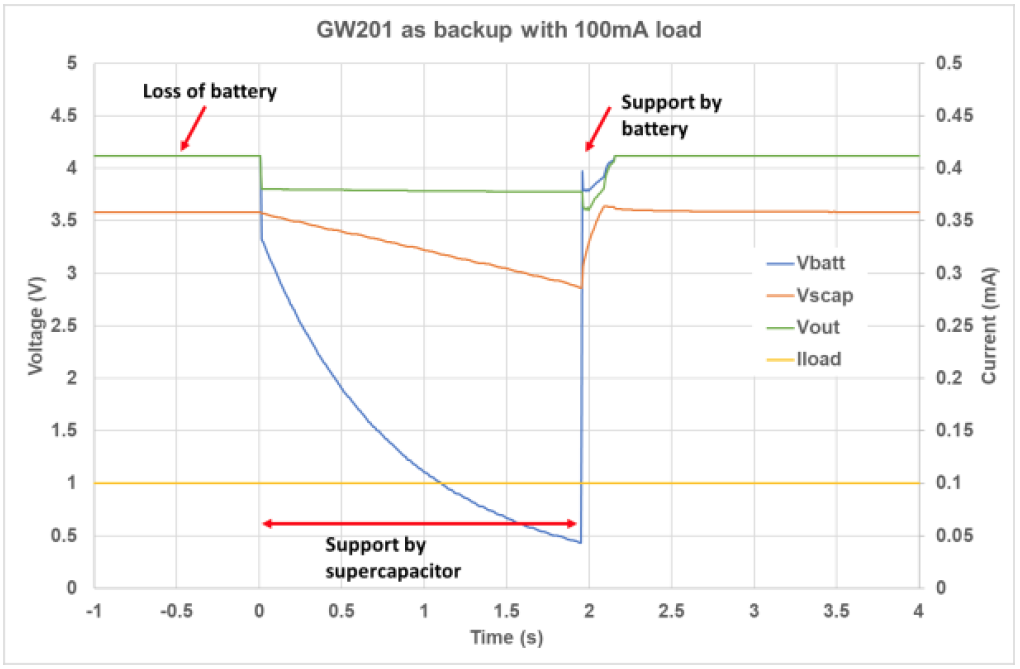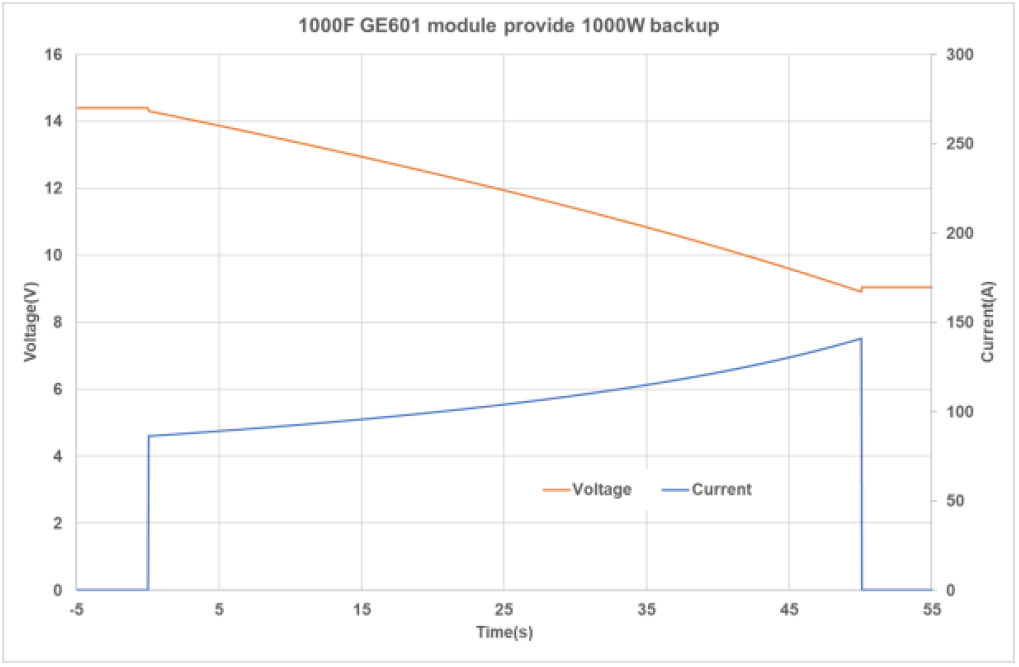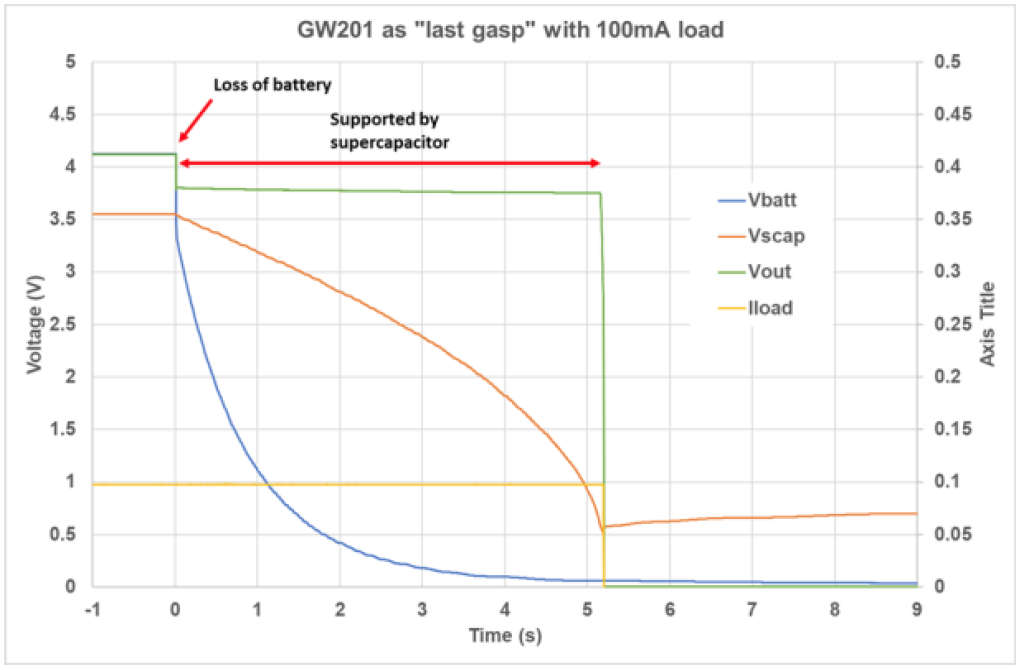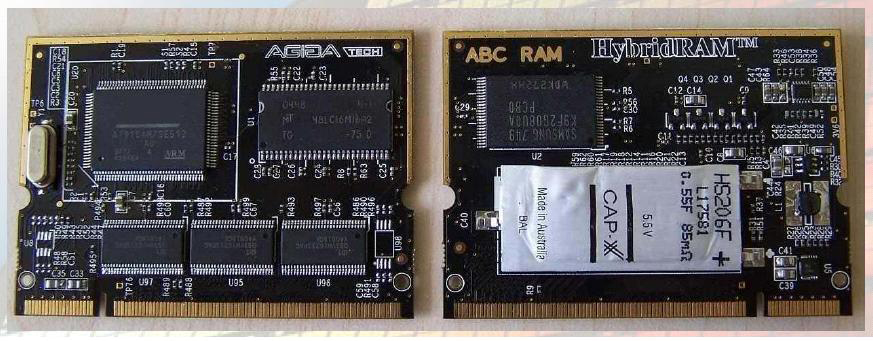Supercapacitors provide backup power
A supercapacitor can store ~1000x more energy than a traditional capacitor to act as a reliable, maintenance free backup energy source, even for high power loads, to save critical data and allow a graceful shutdown when power is lost. CAP-XX’s ultra-low-profile, low ESR, prismatic supercapacitors can be easily integrated into any device where size is critical, whilst our cylindrical cells offer a low-cost higher C alternative if size is not crucial.
Supercapacitors provide both peak and backup power
An unexpected loss in power can cause havoc: loss of irreplaceable cached data, corruption of a transaction, or damage without a graceful shutdown. Thus, temporary backup power is a common requirement for a range of applications in case the main power source is interrupted or lost.
Many system designs integrate a secondary battery which suffer from long charge times, limited cycle life, reliability issues, large physical size, limited power, and limited operating temperature range. However, supercapacitors can act as a backup power source without these limitations. Supercapacitors use physical charge storage, can be charged “instantaneously”, with virtually unlimited cycle life, and their health is easily monitored.
One important application is SSD backup. If there is a power interruption to an SSD the data in cache RAM will be lost which may corrupt the SSD and make all data on the SSD unrecoverable. A supercapacitor provides backup power to flush the cache to flash memory and allow a graceful shutdown. Larger supercapacitor modules can also support high power and be the energy store for a short duration maintenance free UPS supporting a server or multiple critical machines.
APPLICATON BRIEF
AB1016 Rev 1.4
Supercapacitors Provide Backup Power
A supercapacitor can store ~1000x more energy than a traditional capacitor to act as a backup energy source, even for high power loads, in the event of power loss without the need for additional components or long charge times. CAP-XX’s ultra-low-profile, low ESR, prismatic supercapacitors can be easily integrated into any device where size is critical, whilst our cylindrical cells offer a low-cost higher C alternative if size is noncrucial.
A need for backup power
An unexpected loss in power can cause havoc: loss of irreplaceable cached data, corruption of a transaction, or damage without a graceful shutdown. Thus, temporary backup power is a common requirement for a range of applications in case the main power source is interrupted or lost.
Many system designs integrate a secondary battery which suffer from long charge times, limited cycle life, large physical size, limited power, and limited operating temperature range. However, supercapacitors can act as a backup power source without these limitations.
Supercapacitors as power backup
Supercapacitors use physical charge storage so are not limited in power delivery or charge time by the rate of a chemical reaction as in a battery. They can deliver 100’s – 1000’s times more power than a battery with fast response and “unlimited” cycle life. Furthermore, cycle depth is also not an issue and can be cycled with minimal or full discharge with little deterioration.
CAP-XX supercapacitors also maintain low ESR (high power) as low as -40°C and stable operation up to 70°C in the DMF and G Series, and 85°C in the DMT ultra long life (ideal for SSDs, 5 year life at 70°C) and H Series such that they can accommodate outdoor environments all throughout the year.
Temporary or short power loss
Even milliseconds of interruption can compromise data transmission and cause data corruption in applications ranging from SSDs and PDAs to system servers.
Supercapacitors allow for continuous power even with power interruption e.g. battery contact chatter or “hot swap” of batteries without any loss of data cache or need for system restart. One important application is SSD backup. If there is a power interruption to an SSD the data in cache RAM will be lost which may corrupt the SSD and make all data on the SSD unrecoverable. The chart below shows a GW201 (0.4F and 55mΩ) can support a system with continuous 100mA load until the battery is reconnected ~2 seconds later.

If the unit were placed in a low power mode, drawing < 1mA, then the GW201 could support the unit for ~200s, allowing plenty of time for a battery hot swap. Supercapacitors can also support high power and be the energy store for a short duration maintenance free UPS supporting a server or multiple critical machines. The figure below shows CAP-XX’s 1000F GE601 module can support 1000W of power for 50s until mains power or a backup generator cuts in.

Permanent or longer power loss
Traditional systems have fully charged secondary batteries with limited power so oversize these batteries for sufficient power leading to larger physical space requirements.
Supercapacitors with their high-power density are able to transfer cache into non-volatile memory and perform “last gasp” transmissions to alert loss of power, which may include when backup batteries are approaching end of run time. As critical data has been saved this allows more time to respond.
A GW201 can support the continuous 100mA load for more than 5 seconds to complete final house-keeping functions before the system loses power.

The other key attribute of CAP-XX supercapacitors that make them ideal to place across a battery is low leakage current (IL), ~1µA/F. With only 1µA IL, a GS230 only draws 9mAh/yr.
For more information of power backup in devices, see Supercapacitor for SSD and Use of a Supercapacitor in a PDA.
Sizing and selecting your supercapacitor
CAP-XX has a large range of prismatic supercapacitors from 0.09F – 2.4F and 1F – 3000F in cylindrical cells.
CAP-XX has released a range of Application White Papers to assist customers design with supercapacitors. For more information please refer to Coupling a Supercapacitor with a Battery and Powering Pulse Loads.


